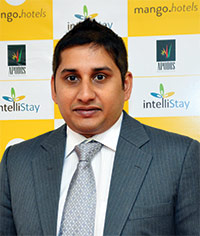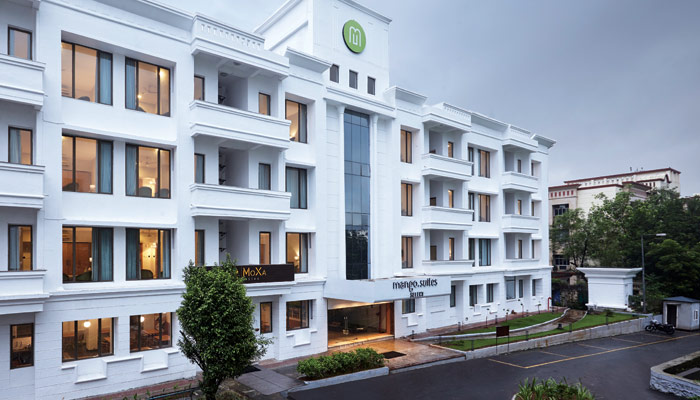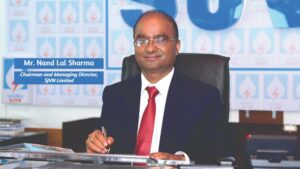On a fast expansion plan
IntelliStay Hotels (IHPL) has emerged as a leading hospitality group in India with three well defined brands – i-Stay Hotels is a smart and stylish economy hotel brand; Mango Hotels are full function business and leisure hotels with major focus on Food and Beverage service localized to each market and the Apodis Collection is an upscale leisure resort model with bespoke services. Together the group manages and operates 25 hotels. IHPL owns, operates and manages properties through agreements such as revenue share leases, operations and management contracts and franchises. Founded by Prashanth Rao Aroor, CEO & Managing Director, in 2008, the company has a mission to emerge as a leading operator of the largest inventory of fully managed hotels across India by 2020. In a freewheeling chat, he speaks about the future plans and the USP of the group.
Please tell us about the journey of the company so far?
Since our first formal funding as a young company in 2012, it has been an enriching journey for the people who make up IntelliStay Hotels. We have always been the underdog and punched well above our weight. Today we are at 50 hotels of which 25 are operational and 25 are in projects. Our key count at 50 hotels will be 2500. This takes us to a top 10 hotels chain among all international and domestic chains in India and with less than $10 million in cumulative funding to reach there. IntelliStay Hotels started as corporate guest house style hotels under the brand Mango Suites. Over time we developed a taste for service and customers have been aspiring for more. Our brands have been dynamically evolving with our customers and as they turn more aspirational, we have been putting out more aspiration brands for them.
We now have a portfolio of three core brands which are Mango Hotels – Mid Scale hotels for those seeking more than just an affordable hotel. A brand that seeks to surprise and delight; i-Stay Hotels for those looking for socially curated stays with no fuss in busy areas; Apodis Collection which are resorts with character and offering luxury in a responsible manner inspired completely by the location – a seasoned Travelers paradise. We have the sub brands of Mango Hotels in terms of the new Mango Suites long stay hotels. Mango Hotels & Suites SELECT which is an upper Mid-scale product for large hotels with more premium offering. Our 25 hotels have 30 operating restaurants and 20 large event spaces with their own brands. Our focus will remain on creating segments and brands where we see underserved markets. We believe that Supply creates Demand as well.
The other remarkable part of our journey has been the people. Most of our founding team is still with us which shows that this is truly a company run by its people. Our shareholders stay out of the way on execution and let the people shine. In the years where we had growth pains our people showed us a lot of loyalty and have been rewarded with growth and learning. A five year stint with Intellistay is like 20 years in another hospitality enterprise. Today our people are also a brand. We call them IntelliZens. They care and they get the job done.

CEO & Managing Director,
IntelliStay Hotels Pvt Ltd.
What is the current status of Indian hospitality sector on demand front?
There is no such thing as the perfect period of growth. Every year we have anticipated a breakout year for the industry and every year something has pulled the rug from under that. First there were infra chokes. When that was fixed, GST slabs at sin industry rates made us noncompetitive internationally. Then there are arbitrary irritants like states going dry on the industry or floods and natural disasters. When all started settling down we are faced with this massive credit crisis. There is simply no money for supply. Hotels need special lending like infrastructure sector. The demand side has been strong for our brands. We serve a large audience with our products for their everyday needs and we are value priced which means that we have not seen much weakness on demand. If the economy shakes off the gloom, we will see a strong but gentle growth path for a decade from here except some pockets of over supply like Gujarat, Jaipur, and Pune etc.
Where does India stand in terms of infrastructure, service and pricing compared to International names?
India had a late start. We have a minuscule share of global tourism. It’s an easy victory for us to expand that multi-fold. The government in the last 5 years has done a lot on infrastructure but a lot remains to be done to connect smaller destinations. The flight connectivity has been expanded commendably. For me, it’s one of the biggest achievements of recent times. Trains and stations have become more users friendly. We have 50 times more domestic tourism than international so the mode of train and road transport is quite important. The next plan has to be destination management and the government can’t do this alone. We have to put up a formal National Tourism Board with representation from the center and state and from industry and eminent citizens. We have to take out state versus center politics from Tourism. It has to be a national mission. The board must pick 5 destinations a year with a decent of budget to re-zone these cities, define the public spaces, create experiences, beautify the tourist areas, zone the hospitality and tourist support amenities and secure all this. That’s when private investment will come in thick and fast. For every rupee the government spends, Industry will spend ten. Amritsar is a great example of this. We need to make 5 Amritsar style renovations of our marquee locations every year. This will unlock huge tourism arrival potential. That’s when the economy will really benefit from an industry which is already 10% of the GDP and of the employment share.
Do you think GST has been good for the sector?
We are not a miserly industry. We are very happy to pay tax especially if the government develops infrastructure with that money. It directly benefits us. GST as a structure has benefited us tremendously by making unorganized players organized and bringing everyone on a level playing field.
Do you have any expansion plan?
We are now on a stable organic path with two hotels opening every month. We believe more on the quality of revenue than opening for the sake of optics. We are doing bigger and better hotels. The real bandwidth is availability of skill to make these hotels centers of excellence. In order to grow faster and overcome the skill crunch we will use the iStay hotel brand. We will franchise it soon backed by technology and some manpower talent from our side to convert urban smaller hotels at pace. We will roll this out in April 20. The plan is to get to 100 hotels organically over two years and another 200-300 hotels on the inorganic model. We may acquire a few brands on the way to speed things up and we are looking at smart hotel entrepreneurs who are signing quality hotels in special segments or specific geographies and creating brands. We also want to help seed a Asset owning company to work side by side with us whereby there is an option to cherry pick and buy attractive options and IHPL can secure that investment with a yield. We are talking to a few interested parties in this aspect.
What makes IntelliStay Hotels different from others? Your USP?
Our people, our practices and our profits. We care more, we are scientific and we make money by delighting our guests. Like Drucker says, anything that is designed and offered with a marketers mind will sell itself. That’s why so much of our design, marketing and brand production work is in-House. Its core to what we are and we don’t want to become a commodity that is shopped on price. Our guests must feel us.






















